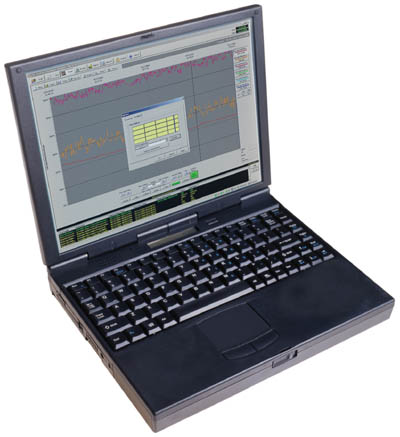
Plant managers are well aware that data gathered from factory floor production equipment can be invaluable for ensuring product quality and increasing productivity. But data collection is a broad term that can cover anything from logging machine temperatures and pressures by hand, to sophisticated systems that display and record real-time information from hundreds of data points. To be effective, data collection must be continuous, easy to display and interpret, encompass all critical machine information and have a long-term storage capacity. Archived factory floor data can contribute immeasurably to a plant's productivity and quality control as a means of capturing machine parameters during production or trial run for new products.
Systems with these data collection capabilities are commonly referred to as data historians, but data historians have traditionally been priced out of range for small and mid-sized plants and have usually been geared for use by control and process engineers. HMI (human machine interface) and SCADA (supervisory control and data acquisition) systems typically do not provide permanent data storage, or cannot collect it from older PLCs or legacy equipment.
For these reasons, long-term data storage is often the most overlooked aspect of the data collection process, and important historical information is often lost. Many companies also have islands of information with no connectivity through OEM equipment or other discrete systems such as weighing devices. This information often is not connected to a central reporting system, is not archived or is not easily accessible.
In pursuing the benefits of machine information, plant managers must first determine the primary purpose of the data collected-preventive maintenance, monitoring equipment operating parameters, archiving information for quality control, increasing productivity or a combination of these needs. They must then select the data collection method that will give them what they want, as often as they want and in the format that is best suited to the operation.
Maintenance and data collection
In this era of lean manufacturing practices, $20 billion, or almost 5% of total North American production, is lost each year in unscheduled downtime. Better techniques are needed to avert production equipment failure and get production lines quickly running again when problems occur. Continuously monitoring equipment-operating conditions, such as speed, temperature and pressure can help predict machinery failure, which allows corrective action before a shutdown occurs.
Equipment breakdown may stem from mechanical, electronic, software application, operating system or human error. When failures occur, data collection software allows personnel to pull up the exact operating parameters and machine conditions present at the time of the failure, as well as minutes or even hours prior to the event. This information can help maintenance personnel quickly locate the cause of the machine failure and remedy the situation.
Turning machine data into factory intelligence
Undetected equipment problems also can contribute to product defects. In addition, many industries depend on machine operating parameters to maintain product quality. For example, one manufacturer uses equipment data to help identify registration problems with its print process. Another, a vinyl flooring manufacturer, referenced equipment process parameters to uncover how a defective tach generator was causing grooves in its flooring tiles.
Recording and storing equipment operating data gives plant management access to quality control information when addressing customer queries about product workmanship. It also can help them comply with regulatory inquiries about a product produced months, or even years, before.
Historical manufacturing data becomes factory intelligence when plant managers use it to help plant personnel work smarter and make decisions based on past production line performance. Detailed factory intelligence provides managers with a clear picture of the relationship between operator activity and production results. Using this data to explain cause and effect helps plant management demonstrate to equipment operators how their actions affect production performance.
The latest factory intelligence systems routinely record data points from new or legacy equipment as well as most islands of information. This data is then stored on the system's hard drives, and backed up nightly via a universal serial bus (USB) backup drive. The USB drive can easily be swapped out on a yearly basis and the previous year's information archived and stored in a safe. Unlike data historians, factory intelligence systems do not need to connect into a SCADA or HMI.
Effortless data recovery
It takes a trained and experienced eye to interpret equipment data and make the most of the information provided. But data should not be so cryptic as to require a codebook. Most data historian systems were designed for system engineering applications. These systems are usually not conducive for factory floor managers and personnel to use equipment or process data to manage quality, productivity and maintenance. Because of this, plant managers often find it cumbersome to extract and archive data. Factory intelligence software is Internet-enabled, allowing manufacturers to review process and machine data from home or anywhere in the world.Historical data analysis and trending typically requires continuous monitoring of all data points. Even a gap of a few seconds between data collection times can be critical if trying to determine the cause of a failure that shuts down the line.
Factory intelligence systems that provide long-term data collection and storage are not a cure-all for factory floor problems and challenges, but, if properly planned and implemented, they can be effective tools for plant personnel responsible for productivity and product quality.